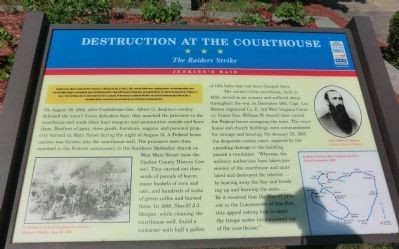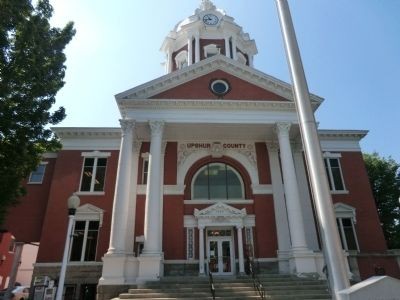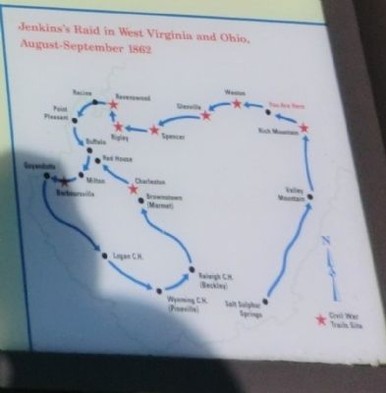Jenkin's Raid at the Courthouse - Historical Marker
Introduction
Text-to-speech Audio
Images
The marker giving detailed description of the raid at the courthouse.

Updated photo of Upshur County Courthouse.

The marker includes a map of Jenkins' 1862 riad

Backstory and Context
Text-to-speech Audio
The courthouse was built in 1855 and still serves as the Upshur County courthouse today. Buckhannon was home to a community that stayed loyal to the Union, making it an ideal place for a small Union garrison. Jenkins and his 550 cavalrymen made a point of attacking small garrisons like this as a way of stealing supplies and harming the Union war effort at the same time.
While Jenkins raided many areas over his 500-mile stretch, the courthouse was one of this biggest prizes. The raiders attacked stores and the hospital as well before riding away in order to avoid facing a Union force of equal or greater size. Jenkins' success as a raider depended upon speed, and he frequently rode his men away from even the slightest rumor of a sizeable Union force. While this tactic won Jenkins few admirers, even among Confederate officers who distrusted him, avoiding a pitched battle was key to the success of his five hundred mile raid. It also led to Jenkins' failure to support Lee's army in the days leading up the Battle of Gettysburg.
While Jenkins is notorious for his decision to capture and sell free people of color in Pennsylvania in 1863, he is also known for his forbearance to white civilians. For example, Jenkins ordered his men to not destroy the property of families other than stealing horses and he did not condone attacks on white women and children alone or private homes. Jenkins remained in Buckhannon for several days after the attack and gave a speech at the courthouse on September 4th, 1862.
Sources
Wheeling Intelligencer September 3, 1862, as quoted in West Virginia History and Culture, Timeline of West Virginia: Civil War and Statehood, www.wvculture.org/history/sesquicentennial/18620830.html. Accessed 23 Sept. 2018.
Confederates Bring “A Regular Slave Hunt” To Pennsylvania. This Cruel War. April 12, 2016. Accessed February 16, 2019. http://www.thiscruelwar.com/regular-slave-hunt-pennsylvania/.Photo Credit: Morfe, Don. , 24 Aug. 2012, www.hmdb.org/marker.asp?marker=58723. Accessed 23 Sept. 2018.
